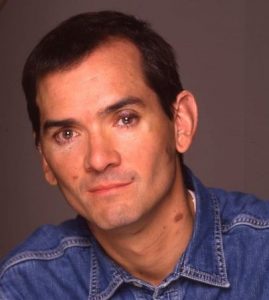Walter McMillian lived an ordinary life alongside his wife Minnie McMillian and their three children. McMillian had a business of his own and was an upstanding member of his community. Aside from having a misdemeanor charge from a barroom fight, he had a clean record and no other charges to his name. His loving friends and family spoke very highly of him and of everything he did for his community.1
On November 1, 1986 in Monroeville, Alabama, shocking news struck the town. There was a tragic murder of eighteen-year-old Ronda Morrison. The crime took place at the Jackson Cleaners in Monroeville. The community heard about the tragedy as many had gathered for a fish-fry at McMillan’s home to raise money for their local church. McMillian clearly recalled the moment the news got to them. McMillian was shocked and absolutely saddened to hear about it. Little did he know that the murder of Ronda Morrison would impact his life in a major way later on.2
On June 7, 1987 at around 11:00 a.m, McMillian was peacefully driving down Route 84. Suddenly, State Troopers, city cars, sheriffs, and deputies surrounded his car. They stopped him with guns pointing at his face, and they shoved him up against his truck. McMillian was completely clueless as to why this was happening to him. When he asked for an explanation, they loudly and angrily said that he was being charged with sodomy for assaulting a man. This left McMillian even more clueless as they didn’t provide him with an explanation for how or why he was being charged with such a crime. He was then taken to the local jail where the charge was quickly dismissed. A deputy then revealed to McMillian that the initial charge was only a way to impound his truck. His truck was later examined by Bill Hooks who claimed to have seen McMillians’ truck at the cleaners. Hooks later testified at McMillians’ trial. At the trial, Hooks kept his testimony and claimed to have seen the truck near the Jackson Cleaners at the time of Ronda Morrison’s murder.3

McMillian was innocent. He knew it, his family knew it, and his friends knew it. As a black man living in southern Alabama, McMillian didn’t stand a chance. That one testimony of Hooks’ was all it took to convict him for the murder of Ronda Morrison. Within weeks, McMillian was transferred to a maximum-security state prison in Atmore, Alabama. McMillian was then placed in a cell on death row where he waited for a year before his trial took place. McMillian recalls his time there as a terrible experience. He was allowed forty-five minutes of exercise per day and a few hours in the day room per week. His days were spent twenty-three hours a day in a dark cell. The visits from his family were the only thing getting him by in his time there. His time spent in prison was torture not only to McMillian but to his family and friends as well. They knew their statements against a white man’s perjured testimony didn’t stand a chance.4

McMillian’s trial lasted two days. He had about half a dozen of his friends and family members testifying that they were with him at the time of the crime. Despite having various witnesses on his side, it seemed useless. All he could do was sit there and listen as three witnesses for the prosecution lied in their testimonies. The false testimonies claimed that they had seen McMillian near the cleaners the morning of the murder. Each testimony had inconsistencies in their stories, but that did not matter. The jury then found McMillian guilty despite that there was no physical evidence that linked him to the crime. McMillian was looking at two options for his sentence: death by electrocution, or life in prison. After the jury took a vote, the final decision was made, and McMillian was sentenced to death.5
In 1988, freshly graduated from Harvard, Bryan Stevenson was eager to help inmates on death row. Stevenson came across McMillian’s case and met with him and began working on appealing his case. Stevenson presented the newfound evidence at hearings and appeals before the Alabama Court of Criminal Appeals. Part of the evidence revealed a tape where a witness confessed to having been pressured to frame McMillan. On March 3, 1993, the County District Attorney finally dismissed the charges. At last, Walter McMillian was a free man again, after spending six years on death row.6

Once McMillian was free and returned to his hometown, he sought compensation. He filed civil lawsuits against state and local officials for his wrongful conviction. He also filed civil lawsuits for his sentencing to death row. The officials involved in prosecuting McMillian received no punishment or removal from their positions. While McMillian did receive an undisclosed amount of compensation, it was less than he had hoped for. Those six years on death row traumatized McMillian in many unthinkable ways. It took a significant toll on his health and led to him developing early-onset dementia. Walter McMillian passed away on September 11, 2013.7
- Pete Earley, Circumstantial Evidence: Death, Life, and Justice in a Southern Town (New York: Bantam Books, 1996.) 31. ↵
- Michael B. Ross, “The Execution of Innocence,” Peace Review 10, no. 3 (1998): 481–483. ↵
- Pete Earley, Circumstantial Evidence: Death, Life, and Justice in a Southern Town (New York: Bantam Books, 1996), 122. ↵
- Pete Earley, Circumstantial Evidence: Death, Life, and Justice in a Southern Town (New York: Bantam Books, 1996), 150. ↵
- Michael B. Ross, “The Execution of Innocence,” Peace Review 10, no. 3 (1998): 481–483. ↵
- Michael B. Ross, “The Execution of Innocence,” Peace Review 10, no. 3 (1998): 481–483. ↵
- Pete Earley, Circumstantial Evidence: Death, Life, and Justice in a Southern Town (New York: Bantam Books, 1996), 394. ↵



41 comments
Janie Cheverie
It’s very unsettling that there are so many cases that are still unresolved. This demonstrates how many flaws the criminal justice system has particularly that there isn’t an equal representation in the jury. This article has great details and evidence to back up the story making it very engaging. This is a good reminder of the injustices in our world and the lengths individuals go to to make them right.
Angela Perez
This article does a great job at highlighting major faults in our criminal justice system. It is outrageous that an innocent Black man was convicted and sentenced for a crime when the prosecution had no physical evidence linking him to the murder. It was difficult to read that his two options were either life in prison or death by electrocution. I feel as though most people think that the electric chair is so far in the past but in reality it was not outlawed in all states until a couple of years ago.
Kendall Guajardo
I remember seeing the movie on this case and it was such a sad story to watch unfold. To be a part of a community that was so racially charged against him as a black man is so disheartening because he had to suffer for so long only for those same officials to not face retribution for their clear framing of a false crime. The criminal justice system has its flaws as in there really wasn’t an equal representation in the jury at the time. It has gotten a lot better but still there isn’t equal standing when representation is ultimately unequal for the impoverished or defending counsel. Living in rural Alabama, I am sure everyone saw the outcome of the case as natural but the reality of the difficulties his lawyer, Bryan Stevenson, faced for merely representing a man who was convicted with no hard evidence, shows the disparities when different races aren’t assimilated.
Aleea Costilla
This story is one we hear far too often of the criminal justice system, failing to provide what it advocates for, justice. The system is built on a history of racism and discrimination; thus, it does not operate as intended in the constitution. I appreciate the story you told of McMillian and how attorneys such as Stevenson are attempting to aid those who are victims of the system. I would also like to address how many attorneys can work for those wrongfully convicted because of programs like the Innocence Project.
Maria Obregon
This article shows best what one of the biggest issues with the criminal justice system of this country is. The story of Walter McMillian took place years ago, yet stories like his continue to happen today. It is truly unjust how African American people have to deal with this, and it is not only those who are wrongly accused who go through these difficult times, but their loved ones as well. It is so heartbreaking. Things need to change!
Reba Reyes
I read something similar to this and I think it is terrible how the racial discrimination is still going on. He was not guilty yet the color of his skin persuaded the jury that he is guilty. Everyone knew he would not commit a crime like that because that is not the type of person he is, however wants to assume that it is him. I am happy that he was not given the death penalty after all but to be placed on the death row is horrible.
Elijiah Logan
Racial discrimination has been around for as long as anyone on this earth can remember. Unfortunately, while it has diminished, it is still quite prominent in today’s society. Before reading this article, I had already known of the horrific case regarding McMillian. However, it is always a healthy reminder that we people in this world like Stevenson, who will seek justice for the injustices of the world.
Marcus Saldana
It very sad that many cases like this one are still unresolved. Thank goodness he was able to stay alive but after all that he went through can you really say that he was still living? Death row for someone that innocent is heart breaking. All this because someone said they saw his truck that day of the killing. The system needs to be fixed or cases like this will continue to exist. Great article with fantastic detail.
Kayla Sultemeier
After seeing the movie “Just Mercy” which is actually based on this case, I was disappointed, but unfortunately not shocked. It amazes me how little evidence it took to arrest an innocent black man who had several key witnesses testify on his whereabouts. The film even goes into how his attorney had to pester the man who gave the wrongful testimony to finally confess. His attorney started a large organization of lawyers who strive to take innocent people off of death row. The fact that that is a job that SEVERAL attorneys have in America is heart breaking and unacceptable.
Maya Simon
It is sad that till this day we are still dealing with racial discrimination. Mr. McMillan was falsely accused of a crime he did not commit. This has happened some many times in our community and all honesty he probably will not be the last person this happens to. He was going to be sentenced to the death row and a crime he did not commit all because he was a successful African American who owned his own business and back then white people did not like that. He suffered for 6 years in jail and when got out his life freedom was not even great.